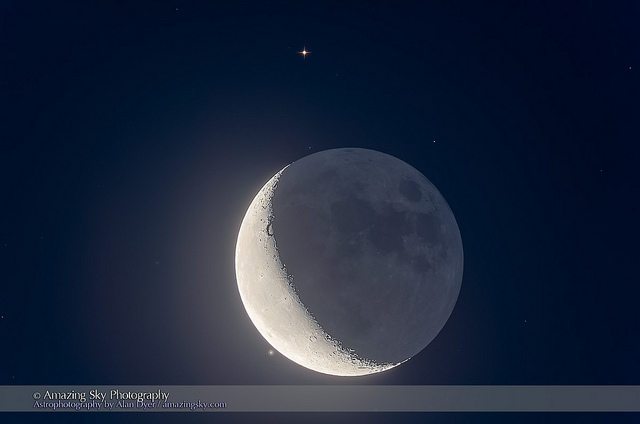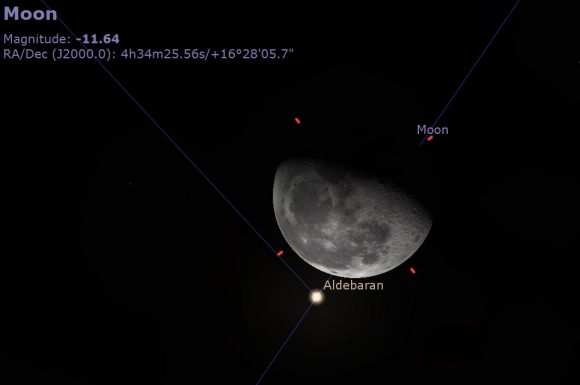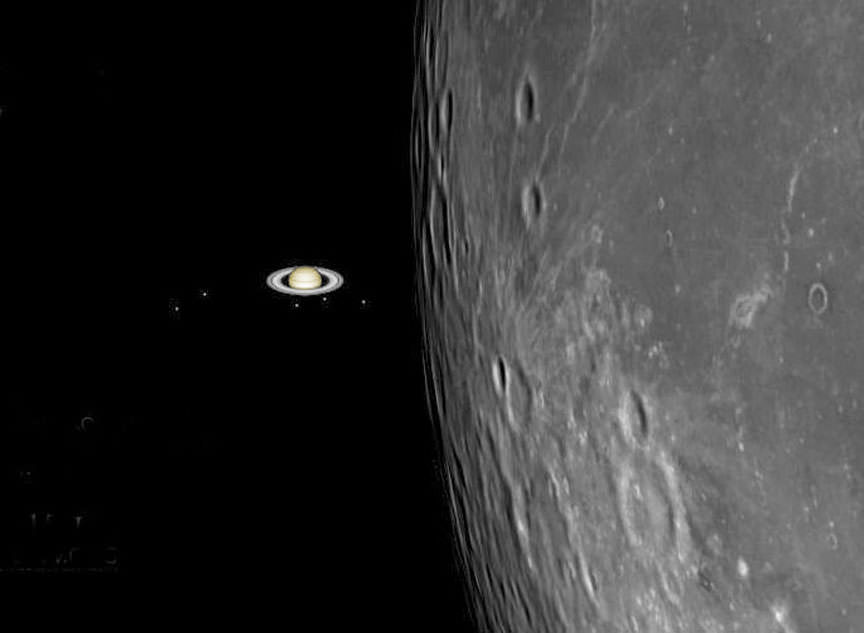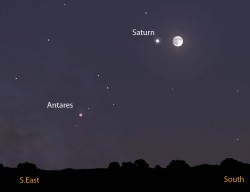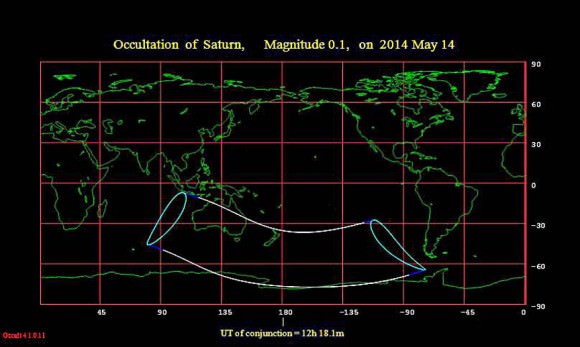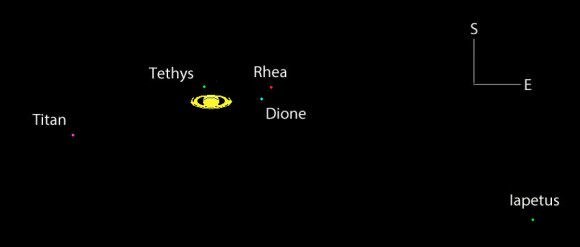This week, we thought we’d try an experiment for tonight’s occultation of Aldebaran by the Moon. As mentioned, we’re expanding the yearly guide for astronomical events for the year in 2017. We’ve done this guide in various iterations since 2009, starting on Astroguyz and then over to Universe Today, and it has grown from a simple Top 10 list, to a full scale preview of what’s on tap for the following year.
You, the reader, have made this guide grow over the years, as we incorporate feedback we’ve received.
Anyhow, we thought we’d lay out this week’s main astro-event in a fashion similar to what we have planned for the guide: each of the top 101 events will have a one page entry (two pages for the top 10 events) with a related graphic, fun facts, etc.
So in guide format, tonight’s occultation of Aldebaran would break down like this:
Wednesday, September 21st: The Moon Occults Aldebaran
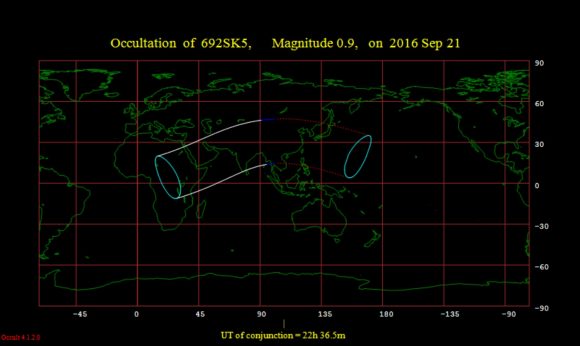
Image credit Occult 4.2
The 67% illuminated waning gibbous Moon occults the +0.9 magnitude star Aldebaran. The Moon is two days prior to Last Quarter phase during the event. Both are located 109 degrees west of the Sun at the time of the event. The central time of conjunction is 22:37 Universal Time (UT). The event occurs during the daylight hours over southeast Asia, China, Japan and the northern Philippines and under darkness for India, Pakistan and the Arabian peninsula and the Horn of Africa. The Moon will next occult Aldebaran on October 19th. This is occultation 23 in the current series of 49 running from January 29th 2015 to September 3rd, 2018. This is one of the more central occultations of Aldebaran by the Moon for 2016.
The view from India tonight, just before the occultation begins. Image credit: Stellarium
Fun Fact-In the current century, (2001-2100 AD) the Moon occults Aldebaran 247 times, topped only by Antares (386 times) and barely beating out Spica (220 times).
Or maybe, another fun fact could be: A frequent setting for science fiction sagas, Aldebaran is now also often confused in popular culture with Alderaan, Princess Leia’s late homeworld from the Star Wars saga.
Like it? Thoughts, suggestions, complaints?
Now for the Wow! Factor for tonight’s occultation. Aldebaran is 65 light years distant, meaning the light we’re seeing left the star in 1951 before getting photobombed by the Moon just over one second before reaching the Earth.
There are also lots of other occultations of fainter stars worldwide over the next 24 hours, as the Moon crosses the Hyades.
And follow that Moon, as a series of 20 occultations of the bright star Regulus during every lunation begins later this year on December 18th.
Gadi Eidelheit managed to catch the March 14th, 2016 daytime occultation of Aldebaran from Israel:
And also in the ‘Moon passing in front of things’ department, here’s a noble attempt at capturing a difficult occultation of Neptune by the Moon last week on September 15th, courtesy of Veijo Timonen based in Hämeenlinna Finland:
Lets see, that’s a +8th magnitude planet next to a brilliant -13th magnitude Moon, one million (15 magnitudes) times brighter… it’s amazing you can see Neptune at all!
Last item: tomorrow marks the September (southward) equinox, ushering in the start of astronomical fall in the northern hemisphere, and the beginning of Spring in the southern. The precise minute of equinoctial crossing is 14:21 UT. In the 21st century, the September equinox can fall anywhere from September 21st to September 23rd. Bob King has a great recent write-up on the equinox and the Moon.

Don’t miss tonight’s passage of Aldebaran through the Hyades, and there’s lots more where that came from headed into 2017!

